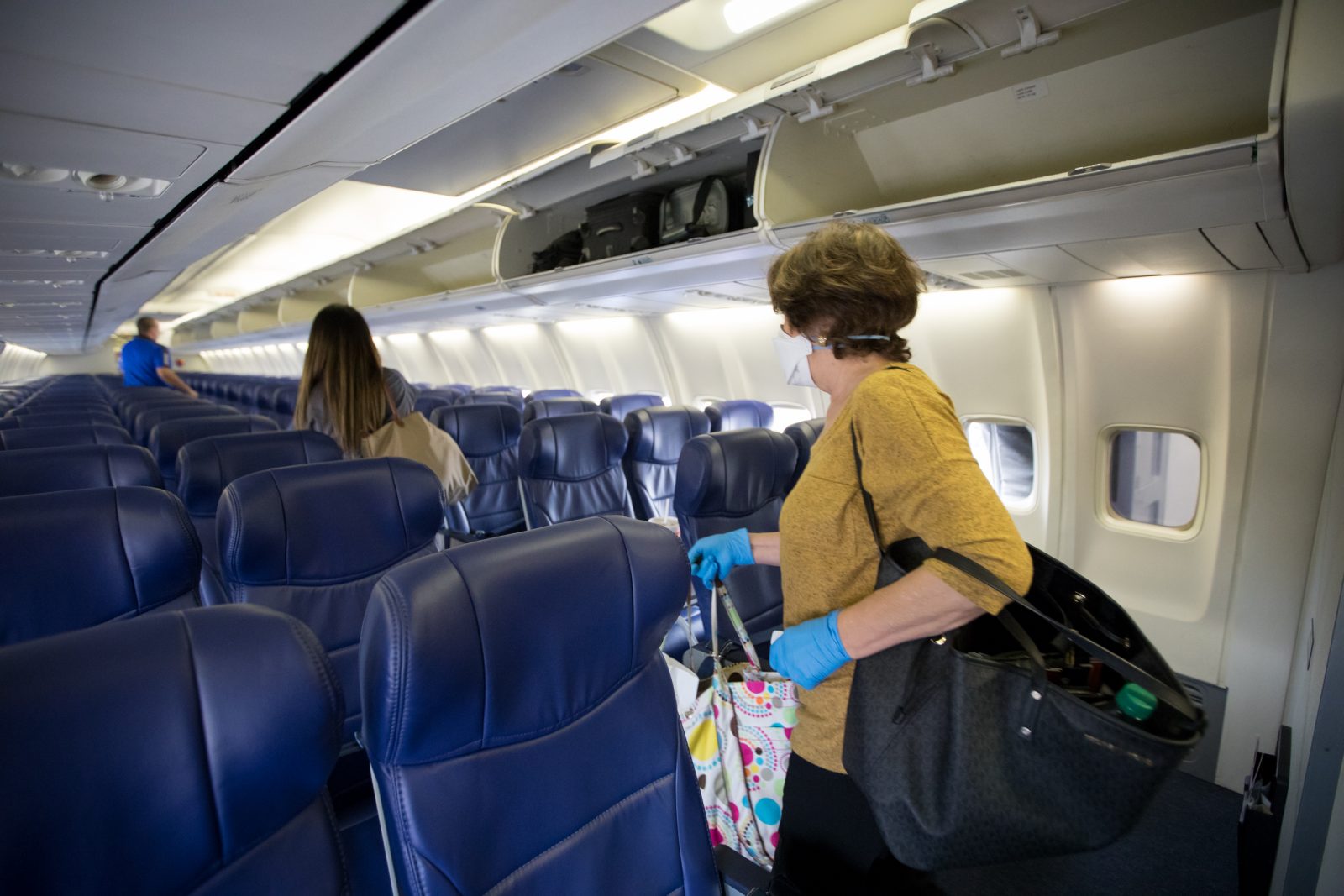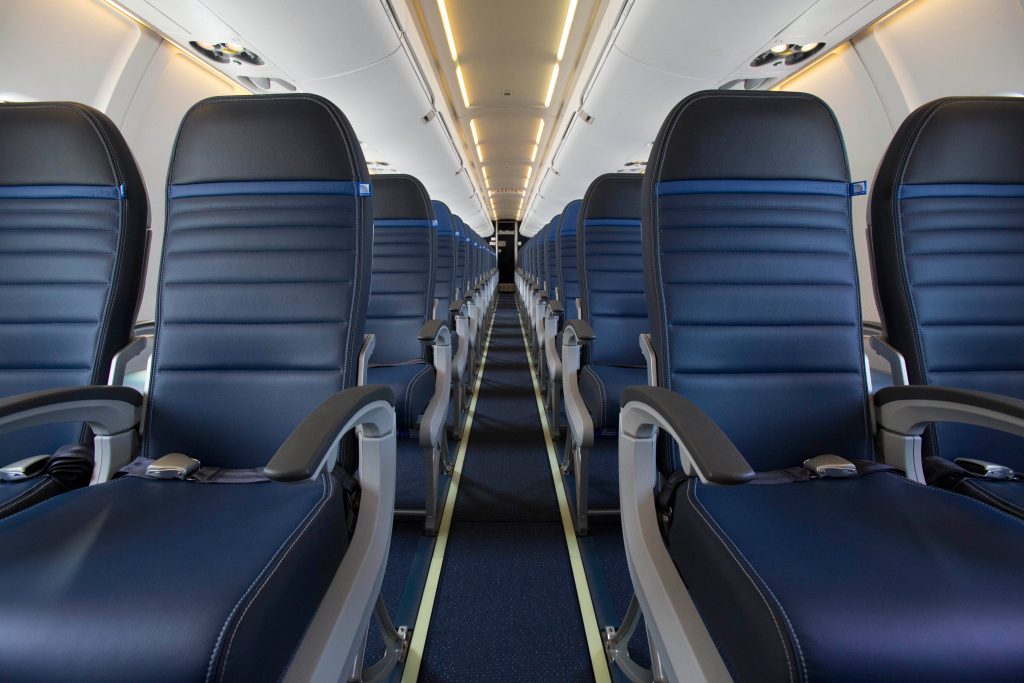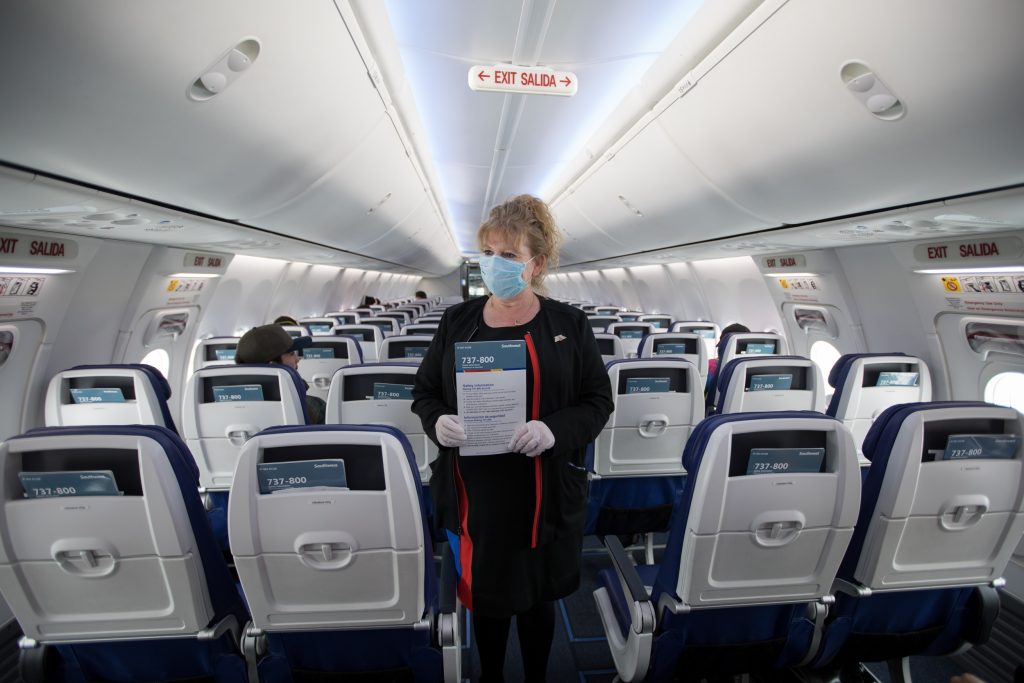
A new study suggests blocking middle seats on aeroplanes like some carriers including the likes of Delta and jetBlue have chosen to do could slash the risk of catching COVID-19 by half. The research by Arnold Barnett, George Eastman Professor of Management Science and Statistics at the MIT Sloan School of Management, however, acknowledges the figures are a “rough” approximation and the paper has not yet been peer-reviewed.
The study will likely heap renewed pressure on American Airlines and United who have both outright rejected blocking middle seats or restricting passenger capacity to enforce some form of social distancing on its aircraft. Earlier this month, United’s chief communications officer justified its policy by describing middle seat blocking as just a “PR strategy”.

But the paper published by Med RX iv claims some physical distance between passengers is better than none and its author argues even a rough approximation is better than “unsubstantiated conjectures”.
With a single-aisle plane like an Airbus A320 or Boeing 737 filled to capacity and all middle seats occupied, the researchers claim the risk of contracting the novel Coronavirus from a nearby passenger is as high as 1 in 7,000. When middle seats are left open, that risk falls by half to 1 in 14,000.
The chance of dying from COVID-19 under these “imperfect” calculations, the researchers suggest, is 1 in every 430,000 passengers. With the middle seats left empty, the chance of dying falls to 1 in 770,000.
“Both these estimates are considerably higher than the risk of perishing in a US air crash unrelated to Covid-19, which is about 1 in 34 million,” the paper explains. However, it remains unclear whether the chance of being infected on a plane is any higher than when doing everyday activities like grocery shopping.

There are also other problems with the research. The authors, for example, discounted flight time as a factor and couldn’t include the risk associated with the boarding and deplaning process. The authors also assumed all passengers were wearing a face mask – an assumption that has been demonstrated not to happen in practice.
And even with no formal seat blocking policy, not every plane is going to be filled to capacity. Even before the Corona crisis, average load factor for U.S. flights was 85.1 per cent – that would reduce the risk of dying from COVID-19 to 1 in every 540,000 passengers even if a formal middle seat block wasn’t in force.
“The calculations here, however rudimentary, do suggest a measurable reduction
in Covid-19 risk when middle seats on aircraft are deliberately kept open,” the paper explains. “The question is whether relinquishing 1/3 of seating capacity is too high a price to pay for the added precaution.”
It’s a question that has been mulled by airlines around the world, many of which have decided to reject middle seat blocking. The International Air Transport Association (IATA) argues limiting capacity isn’t necessary because the cabin environment naturally makes transmission of viruses difficult.
Related
Mateusz Maszczynski honed his skills as an international flight attendant at the most prominent airline in the Middle East and has been flying ever since... most recently for a well known European airline. Matt is passionate about the aviation industry and has become an expert in passenger experience and human-centric stories. Always keeping an ear close to the ground, Matt's industry insights, analysis and news coverage is frequently relied upon by some of the biggest names in journalism.







